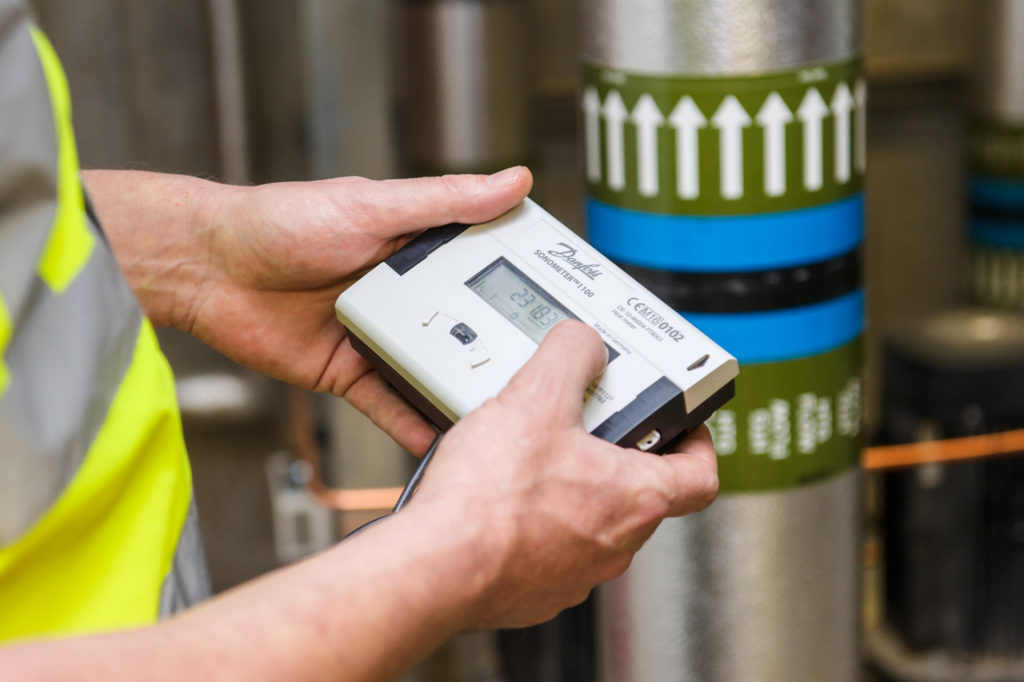Although heat networks only fulfil around 3% of UK heat demand, it is calculated that 14-20% of UK heat demand could be cost-effectively met by heat networks by 2030, and 43% by 2050. Rapid market growth is therefore needed. Here, Jack Howe, Business Development Manager at Insite Energy, discusses the complexities surrounding heat network metering and billing.
To encourage development of new heat networks, the Government has provided funding and has started to introduce a series of regulations to protect consumers. It seems to be working, as heat networks are becoming increasingly common nationwide.
A considerable growing pain is that many who manage heat network developments, including housing associations and local authorities, have little knowledge or experience of the technologies involved, particularly with highly complex metering and billing processes. Yet any organisation with day-to-day responsibility for operating a heat network is regarded as a ‘heat supplier’ and must fulfil certain legal obligations. Failure to comply can result in civil or even criminal penalties.
Legal requirements
In most cases, by law, heat suppliers must ensure there is a functioning energy meter for each household connected to a heat network, giving accurate, detailed, and transparent usage data. Bills must be based on actual consumption and not estimated.
As heat network residents cannot change the equipment or service providers selected for them, many local authorities are understandably wary of making bad choices and shackling tenants to high prices or poor services. Their reputation and their residents’ quality of life depend on them getting it right. This is particularly important now when energy prices are skyrocketing making every penny count.

Confusion
There are many metering and billing providers and solutions to choose from, not only when specifying a new development, but also when upgrading equipment or switching suppliers later on in a building’s life. Some systems and contracts are easy to switch and others not, presenting a further source of uncertainty.
The terminology around heat metering is confusing: ‘open protocol’ and ‘transferable’ are often used interchangeably, but they don’t mean the same thing. Understanding these terms is crucial for making good purchasing decisions, both when a scheme is being developed and when new meters are retrofitted to an existing development.
Open protocol refers only to hardware — meters or heat interface units (HIUs). Anyone, including another metering company or a housing association themselves, can access an open-protocol system and use it to bill residents. ‘Closed protocol’, meanwhile, applies to HIUs with in-built metering and billing infrastructure and software that can only be accessed by the supplier.
Transferable relates only to software. A transferable metering system allows other billing providers to access it on a Software-as-a-Service (SaaS) basis. Like a licence fee, the SaaS fee is payable to the ‘head end’, i.e., the software’s developer or owner, giving the new supplier full visibility of billing data. SaaS fees vary from £10-£40 per unit annually and are passed down to residents within their daily standing charge as part of their bills. Untransferable systems require the new billing provider to purchase data from the old, as accessing the software isn’t possible. Again, the costs of this are passed on to residents.
To avoid paying more and being stuck with the wrong equipment for long periods, wherever possible opt for shorter contracts and open-protocol hardware. Failing that, at least ensure your equipment is transferable so you can change provider, albeit while incurring a SaaS fee.

Getting it right
The ideal solution, however, is a system that’s both fully open protocol and overlaid with smart functionality that helps reduce costs and improve performance. A good example of this is KURVE, the smart metering app that currently offers the greatest flexibility in the heat network market.
KURVE’s wired M-bus system carries data from household meters to a central datalogger, negating the need to install and maintain physical in-home display units (IHDs). This in turn halves capital and operational expenditure.
Should the metering hardware prove unsuitable, data can be accessed by any new provider at no cost and without the inconvenience and expense of replacing IHDs. Residents, meanwhile, can manage their pay-as-you go (PAYG) energy account from any Internet device via the KURVE web-app. If that is no longer desired, the credit-based system underlying it and all the data is freely available to any new supplier. Better still, the HIUs have a built-in disconnect function, meaning the new provider can run a PAYG hybrid — in effect, a credit-billed system that can disconnect a property should the account run into arrears.
While smart metering solutions can still be viewed by some as only suited to private developments with ‘tech-savvy’ tenants, the stats show that social housing residents respond well to the technology.For example, 96% of KURVE users make their payments online, and approximately 60% of customers are housing association or local authority residents.

Service matters
Whatever system housing associations choose, we know that excellent customer service for residents is a priority. However, balancing this against the need to keep costs down, especially as the energy crisis deepens, is challenging. If a provider can undercut a SaaS fee by even a little, that can add up to a tempting saving.
It’s important to remember that when times are hard for customers, high quality support is imperative. We’re fielding more tariff-related queries than ever before — five to six times more than last year. It’s abundantly clear that both residents and local authorities are under pressure. But strong customer service shouldn’t buckle under the pressure and mean a compromise on standards. Great service providers can help to lower costs by streamlining processes, relieving internal pressures, and identifying and resolving issues before they become expensive.









